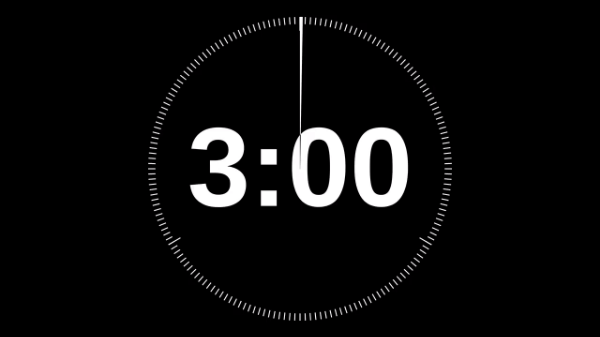Got a Few Minutes to Hear My Research?
 I saw that the Rutgers-Newark campus was hosting a 3-Minute Thesis (3MT®) competition and clicked the link for some explanation. Explain your 75,000 word dissertation in less than 180 seconds? Apparently, doctoral students across the globe are doing just that in the Three Minute Thesis Competition (3MT®).
I saw that the Rutgers-Newark campus was hosting a 3-Minute Thesis (3MT®) competition and clicked the link for some explanation. Explain your 75,000 word dissertation in less than 180 seconds? Apparently, doctoral students across the globe are doing just that in the Three Minute Thesis Competition (3MT®).
It is similar to the Ignite sessions I have done at conferences. In those, the presenters get to use 20 slides, which automatically advance every 15 seconds. It keeps the presentation moving and it last 5 minutes. It is a good way to sample a number of topics and works well if there is a followup of a poster for the talk or the presenter is giving a longer session later.
They last only five minutes, but I have been bored by some that I have witnessed. Ignite® events are held in cities around the world. I haven't attended a 3MT® event, but they only allow one slide and less than 3 minutes.
Are both of these an outgrowth of the PowerPointization of information? Yes, you can present information via slides with bullet points. Yes, it is important to be able to describe your work in a concise way. But sometimes that is just not enough.
I use this Albert Einstein quote on my website: "Everything should be made as simple as possible, but not simpler.” That line is the one that presenter who do a 3 or 5 minute presentation need to be very aware of not crossing.
We seem to like these things. Much older is the elevator pitch. I used it 20 years ago it with students to have them pitch a research topic to their class before they started the actual research. An actual elevator ride is quite short and would be a tough venue to pitch your idea (no slides or props), but my version was 2 minutes and you could use anything you wanted to use (props, slides, music...). Students got very "creative," especially after the TV program Shark Tank appeared in 2009.
3MT® (note the ® registered trademark) was founded at Australia's University of Queensland in 2008 and is now quite official. More than 600 universities host events. Part of the reason to do it is to develop presentation and engagement skills for doctoral students. It does bring research topics to larger communities. It is also a way to promote you and your work.
The very popular TED talks are a longer form of this concept. The speakers at TED conferences are given a maximum of 18 minutes to present their ideas in the most innovative and engaging ways they can.
Is this trend a good thing for attention spans? I keep hearing that attention spans are getting shorter every year for students but also for adults in general. If you see these at a larger conference, do the 45 and 90 minute presentations seem bloated?
I do web design and there is this idea that "Users often leave Web pages in 10–20 seconds, but pages with a clear value proposition can hold people's attention for much longer. To gain several minutes of user attention, you must clearly communicate your value proposition within 10 seconds." 10 seconds. That is a very difficult pitch to make.
And this idea carries over to TV commercials, movie trailers, book jackets and really all advertising.
In 3 or 5 minutes are you informing or marketing?
More information about 3MT® is available at www.threeminutethesis.org
 The annual EDUCAUSE Horizon Report for Higher Education is always interesting to read. The
The annual EDUCAUSE Horizon Report for Higher Education is always interesting to read. The 